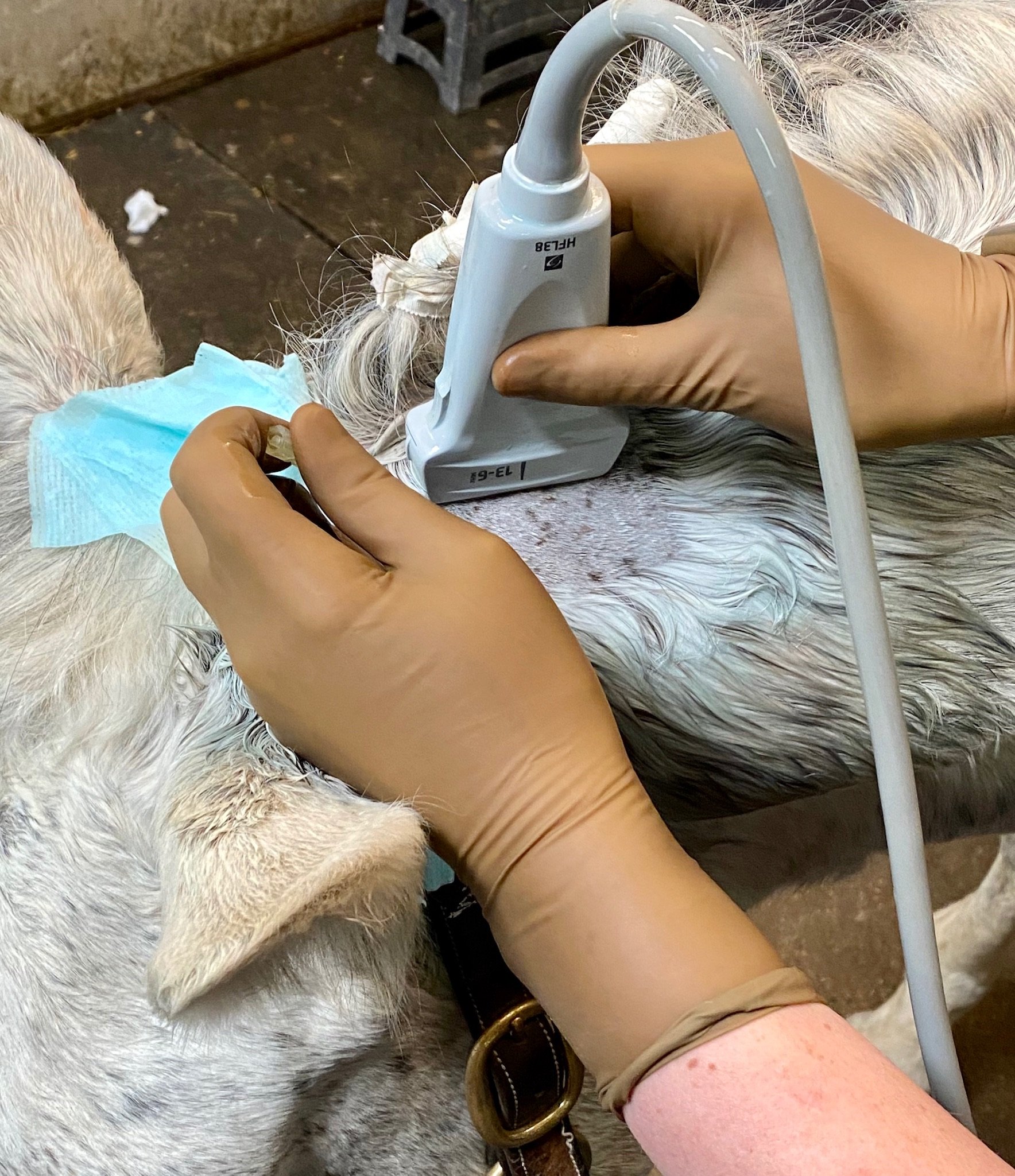
— Sports Medicine & Lameness —
We have so many wonderful treatment options to help your horse with pain, injuries, arthritis, and overall wellness. We can perform a full physical exam and gait evaluation to isolate areas of pain in your horse. Additional diagnostics such as radiographs, ultrasound, or endoscopy can be performed to identify the issue. We have many treatment modalities including shockwave therapy, joint injections, mesotherapy, regenerative therapy, physical therapy, chiropractic adjustments, and many more. Any of these treatments can be combined to help your horse get the best possible outcome! Click here to learn more about all the different treatments we can use to keep your horse happy and sound.
If you are riding your horse consistently, you have an athlete that will, at some point, require additional, non-emergent vet care. Often horses require extra treatment, even if their physical activity isn’t consistent. The common term for this is “maintenance.” Budgeting for your horse’s maintenance is important for their longevity and performance. Doing a gait evaluation at the beginning of the season, with or without treatment, and a recheck in 30 days gives you an abundance of information and allows for a personalized approach to your horse’s healthcare and maintenance.
Ideally, your horse will receive a gait evaluation two to four times each year by your veterinarian. These exams do not always require treatment; the goal is to take a proactive approach. We observe lameness before most owners, riders, and trainers — it’s our job! By the time an owner, trainer, or rider spots lameness, we are working at a deficit. If pain and lameness are caught early and treated early, downtime and long-term effects for your horse are significantly minimized, improving long-term soundness.
Diagnostic imaging allows us to view your horse's lameness injuries, just like our human counterparts at your own doctor. This helps us view certain injuries to determine the best course of treatment for your horse. Often this imaging can detect inflammation in certain areas of the body — one of the main causes of lameness. Once a joint has become inflamed, further damage can occur, both in the tissues of the joint and the cartilage. Inflammation can also cause joint fluid (also called synovial fluid) to build up in the joint cavity, further increasing the inflammation and causing discomfort to your horse. Removing some of the fluid can help relieve pain, and performing joint injections can aid in the healing process and stop the pain cycle. You can learn more about the different kinds of joint injections we can perform here.



